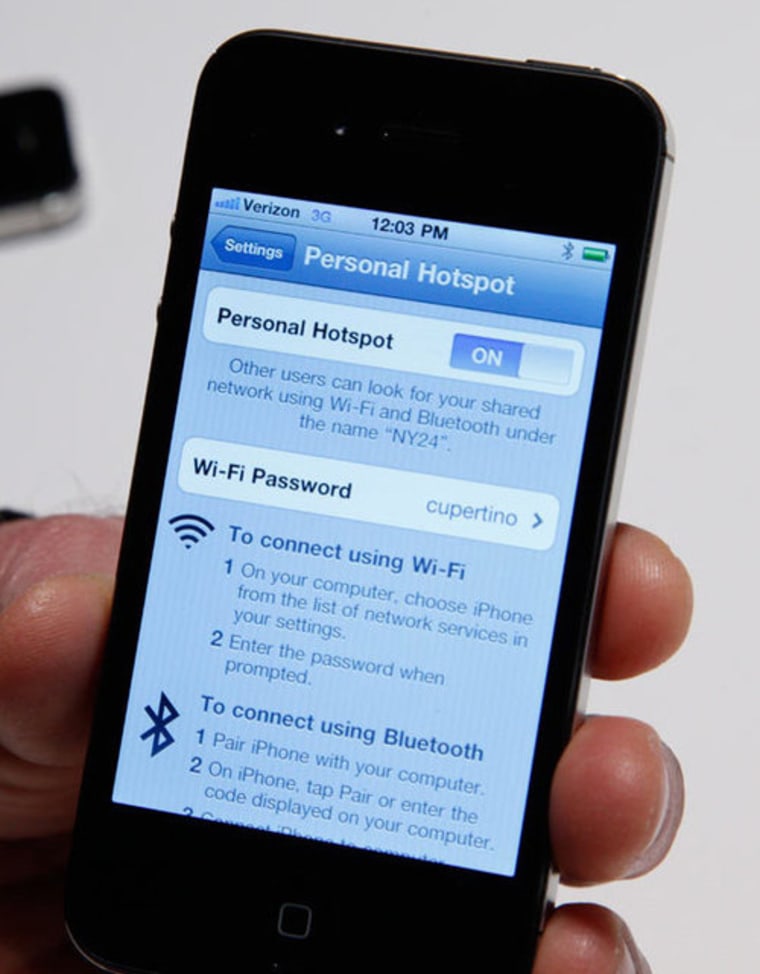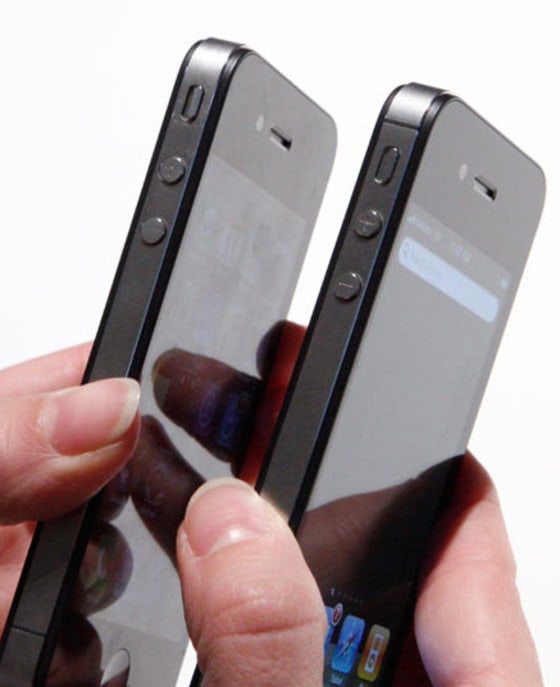We've managed to get a hands-on with the new Verizon iPhone, thanks to our NY-based producer Matt Rivera. The big questions are: What's the same? What's different? While only thorough testing will tell us variations in call and data performance, here's what we know today:
1. The dimensions are the same
There was fear that the CDMA iPhone would be thicker, but we have confirmation that the thickness and other measurements — including weight — are identical.
2. Antennas are slightly different
Though the bottom antenna gaps — which on the AT&T iPhone 4 can be grasped to recreate the "grip of death" known to reduce reception and occasionally drop calls — are still in the same place, the top antenna gap is moved. Instead of being located up next to the headphone jack, it is located on the side, above the mute switch.
Though this doesn't necessarily correspond to any difference in performance, it did cause the switch and volume buttons to drop down "ever so slightly," says Rivera. Our friend Rosa at Gizmodo points out that this hard-to-notice button shift could affect case makers, and might even throw off the iPhone 4 "bumper" that saved many a dropped call.
3. No SIM slot
Anyone familiar with the CDMA phones from Verizon and Sprint knows there's no SIM card slot. Therefore, it's no surprise that there's none found on the first CDMA iPhone. (If this were a Verizon LTE 4G phone, or a CDMA/GSM world phone, there would be a SIM slot, however.)

4. "Internet tethering" vs. "personal hotspot"
While both phones can be used — at extra service cost — to provide Internet access to your computer, only Verizon's is offering a personal hotspot, enabling not one computer but up to five devices to access the phone's Internet connection, via Wi-Fi.
5. No simultaneous data and voice
Something we assumed before that was confirmed today was that the first Verizon iPhone would not allow for simultaneous voice and data connections. This means that while a call is engaged, you'll be able to access Contacts and apps, but no app or services that requires Internet access will function properly.
If some of these differences sound a bit subtle, they are. After a thorough going over, we're convinced that Apple did its best to make these phones all but indistinguishable. "They're shockingly the same," says Rivera.
Photos and additional reporting by Matthew Rivera in New York
Related stories:
